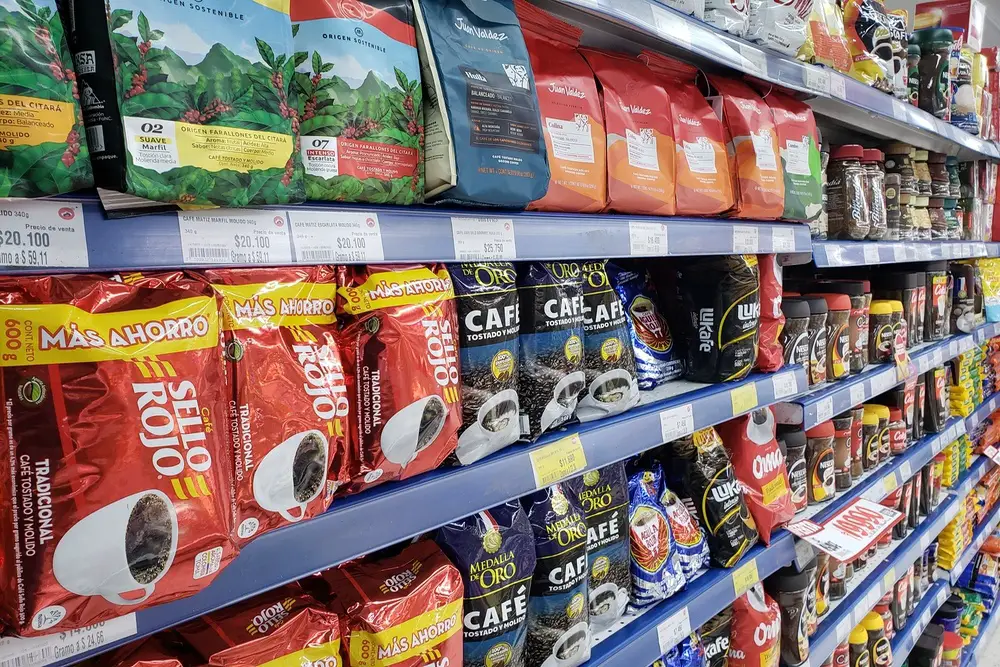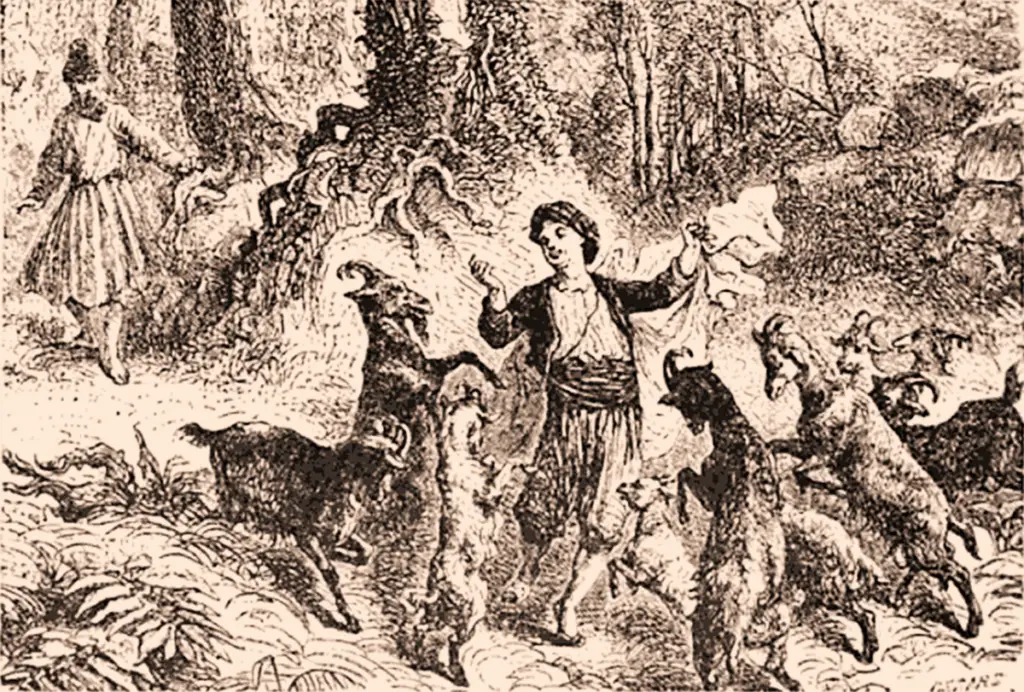You may find an old coffee at home that you have unknowingly kept for a long period of time and wonder if it is still in good condition. How can you tell?
Table of Contents
Does coffee really go bad?
Because coffee is a dry, packaged food, there is no exact expiration date. But coffee that’s been stored beyond a certain date or period of time tends to go bad.
This happens through a process known as oxidation. Oxygen and humidity are the main factors that reduce the shelf life of coffee beans. When coffee is exposed to oxygen, it loses its intensity and flavor over time and eventually breaks down. Therefore, “damaged” coffee is of inferior quality.
Why is coffee damaged?
Undesirable chemical reactions occur when coffee beans break down over time. This process causes the fresh flavor to wear off and the beans eventually go rancid.
Coffee beans are generally resistant to bacteria, mold and fungus. However, if you keep these in a humid place, they can affect the flavor of your coffee over time.
How do you know if your coffee is stale?
When you pick up the coffee container, the first thing you should do is determine its storage condition or location.
- The temperature of the environment in which the coffee is stored.
- The humidity at which the coffee is stored.
- Is the coffee kept in an airtight container?
- Is the coffee roast date printed on the surface of the container?
- Has the container in which the coffee is kept been opened beforehand?
Each of these factors help determine the coffee’s shelf life and whether it will go stale within a few days. You can also check the following features in detail.
Appearance of the coffee
In general, damaged coffee doesn’t look any different than fresh coffee, but it’s still important to examine. A first look at the coffee is especially important if you keep it in a humid environment with high temperatures.
Coffee is hygroscopic, which means it can absorb moisture from the air in a humid environment. If coffee is constantly exposed to such an environment, mold can develop. This change will also be visible.
Coffee smell
If you’re a coffee lover, you probably know the pleasant aroma of an opened container of coffee. Fresh coffee contains this aroma, but when it reaches the end of its shelf life, it loses it. As the oils in the coffee begin to break down, the scent will change and become less pleasant.
Typically, coffee has gone rancid when it smells like this:
- Dusty
- like cardboard
- After ashtray
You may not notice the difference at first. To counter this, it’s a good idea to compare the scent to that of a similar brand of coffee if you have them on hand. If not, a little taste test can be done.
Coffee taste test
A taste test can be performed if you have not previously been able to determine whether the coffee is damaged. Prepare a small amount for this step. Be careful not to add anything to the coffee as this could change the taste.
Let the coffee steep for about an hour before drinking it again and taking a sip. The taste of the coffee should be pleasant and familiar, but if it tastes sour or has a bitter aftertaste, the coffee is officially corrupt.
How long does coffee usually keep?
The type of coffee, whether beans, ground or instant coffee, can affect the shelf life of the coffee beyond the roast date. As mentioned above, whether the coffee has been opened or stored in an airtight container also plays a minor role in the coffee’s shelf life.
Coffee beans
As long as the beans have not come into contact with water, they keep well. They’re good for as long as you can keep them in an airtight container. This is how they last the longest of all the options.
Because darker roasts lack moisture due to a longer roasting process, they become damaged more quickly compared to lighter roasts.
You can store the beans for up to 9 months. It is recommended to use the coffee beans within 2-3 weeks and only grind them when needed.
Ground coffee
Ground coffee is more prone to damage because it has more surface area exposed to oxygen.
It is advisable to use it soon after opening the package and within up to 2 weeks. However, ground coffee can be kept in its original state for up to 5 months if stored correctly.
Instant coffee
These coffees are usually accompanied by notes or dates by which the coffee should be consumed. A general rule of thumb is that coffee should be consumed within a few weeks of opening.
Brewed coffee
If you’ve already brewed your coffee, try to drink it within 12 hours. Brewed coffee should actually be drunk immediately. If this is not possible, it should be transferred to a thermal carafe to slow or prevent the loss of delicate notes. In addition, the coffee should not remain in the coffee machine or stand for too long, otherwise it will become bitter.
How can you keep coffee fresher longer?
Coffee preservation is all about storage. Make sure the container you use is opaque to protect the coffee from light. Store coffee in a cool, dark place to avoid heat and moisture.
Coffee beans are highly perishable as they are prone to moisture loss. The moisture content of green coffee beans varies between 10 and 15%, while freshly roasted coffee beans are around 12%.
After roasting, the moisture content drops to 8%. Roasted coffee beans continue to lose moisture during storage, which decreases even more when stored in humid conditions. This reduction in moisture content leads to faster fermentation and mold growth. It is therefore advisable to store coffee beans in dry places.
What you should know about storing coffee
The first thing you should know is that every coffee, no matter what its form, has five enemies:
- Oxygen
- Warmth
- Light
- Humidity
- Roasting
When coffee is exposed to air, it oxidizes and loses its flavor profile. As with perishable foods, heat and moisture can cause coffee to go rancid, as can light, only the process is slower.
As far as roast freshness is concerned, the coffee beans are filled with carbon dioxide during roasting. Coffee roasters typically store the beans in bags with valves that allow the CO2 to escape.
When storing coffee, avoid these first four things to keep the coffee fresh.
What happens if coffee is kept in the refrigerator?
A common tip for storing coffee is to put it in the freezer. This significantly increases the shelf life. However, freezing the coffee removes some chemicals from the bean, ultimately resulting in a change in flavor. Only put coffee beans in the freezer as a last resort.
Is It Safe to Drink Expired Coffee?
Coffee doesn’t spoil like bread does or bananas rot on the counter. Even if the expiry date has passed, drinking coffee made from old beans will not make you ill.
What to do with damaged coffee beans?
If you have bad coffee beans and don’t want to throw them away, what can you do with them? Recycle them for human consumption or other purposes.
Arts and crafts
While you don’t necessarily have to make a coffee bean mural in your home, small projects can be fun.
Compost
Composting is a natural process that breaks down organic food waste. Allowing stale coffee grounds to rot in your compost adds nitrogen and other important nutrients.
As soon as you pour the compost over your plants, they make optimal use of the important nutrients and start to grow better.
Experiment and learn new methods
It can be fun to learn new processes and cooking methods. So why not take the opportunity and learn while you have damaged coffee beans. This way you don’t waste your favorite beans.
Odor absorbing
Coffee beans have the ability to absorb odors. Not ideal if you plan to use these beans to brew a cup of coffee, but they’re great if you’re looking to freshen up the atmosphere at home.
Empty the beans into an unlidded cup and place in a corner of the room. After a day you will notice a fresher smell.
Conclusion
Drink your coffee as soon as possible after buying it. Fresh coffee always tastes best. However, if you want to prevent your coffee from spoiling, we recommend storing whole beans in an airtight container.



